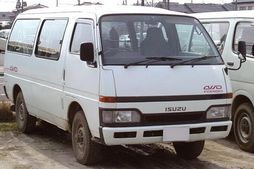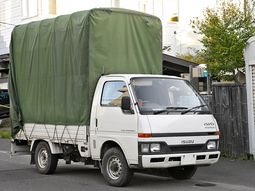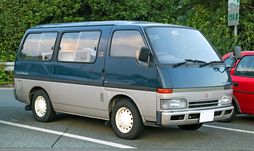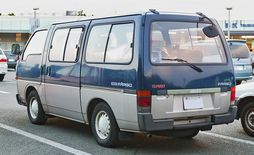The History Of Isuzu Fargo

The Isuzu Fargo is commercial vehicle manufactured between 1980 and 2001 by Isuzu in Japan. The Fargo spanned two generations, the first of which was sold between 1980 and 1995 as both van and utility body styles, with the second generation, introduced in 1995 confined to a single van body style. This second generation was a badge engineered version of the Nissan Caravan E24, as opposed to an Isuzu design.
Between 1982 and 1990 the first generation Fargo was marketed in Australia by Holden, the Australian subsidiary of General Motors as the Holden Shuttle. In Europe and New Zealand, the first series Isuzu Fargo was sold under the Isuzu WFR name.
The first generation Isuzu Fargo was introduced in December 1980 with a 1.6 and 1.8litre petrol engines, and a 1.8litre diesel engine.
- August 1981: 2.0litre diesel van introduced.
- March 1982: 1.8litre gasoline and 2.0litre diesel engines introduced.
- July 1982: Introduction of luxury-oriented nine-seater LS van, featuring a standard sunroof among other features.
- November 1983: Part-time diesel four-wheel drive model introduced.
- January 1984:
- November 1984: Four-wheel drive van added.
- January 1986: Changes to instrument panel.
- January 1987: Automatic transmission available on rear-wheel drive variants.
- September 1987:
- October 1988: Cab forward pickup (truck) body style added.
- January 1991: 2.4litre 4FG1 diesel engine introduced, replacing 1.8 and 2.0litre units. Design changes made to both the interior and exterior.
- August 1993: 2.4litre 4FG1-T turbodiesel standardised across the range. Three-point rear seatbelts now fitted to models fitted with rear seats and the air conditioning unit is now chlorofluorocarbon-free (CFC).
Holden Shuttle
General Motors' Australian subsidiary, Holden released the Isuzu Fargo van in February 1982 as the WFR series Holden Shuttle. The original release Shuttle was available in short- and long-wheelbase guises, in combination with either low- or high-roofs; all of which available with or without side cargo windows. Two engines were initially offered: a 1.8litre 4ZB1 petrol rated 65kilowatts (87hp), and a 2.0litre 4FC1 diesel outputting 44kilowatts (59hp). In 1986, the 1.8 petrol was withdraw and replaced by the 2.0litre 4ZC1 petrol producing 69kilowatts (93hp). All three engines were coupled with a four-speed manual transmission.
The single, cargo-carrying model was accompanied by the limited edition LS—a highly specified nine-seater people-mover variant in October 1982. Only 250 were built for Australian consumption, however, in August 1983, the LT nine-seater people mover was introduced. The lower specification LT was not equipped with the many of the LS Shuttle’s luxury features, including the dual-zone air conditioning. An AM/ FM radio and Compact Cassette player, and digital clock were standard on the LT, with single-zone air conditioning available as an option. Both the LS and LT were powered exclusively by the petrol engine.
The Shuttle was subject to several minor facelifts and running changes over its production run. In mid-1983, a centre front seat was added. This comprised of two outer bucket seats and a centre bench seat, giving the impression of a single bench. June 1985 saw the model range restructured, with the five-speed manual transmission from the LS and LT models now standard on the base model. A facelifted model came in June 1986, involving the relocation of badging, re-shaped headlamps, and newly designed steel wheels for the base Shuttle. This refreah coincided with a reduced line-up; Holden deleted the diesel and long-wheelbase options. From December 1987, a 4-speed automatic transmission option was made available, and the LT people-mover variant was removed—transforming the Shuttle into a single-model range. Holden discontinued the Shuttle in 1990, and opted not to replace it with another vehicle either developed by itself, or sourced from within the General Motors empire. The Shuttle's immediate predecessor were the Bedford CF-series vans sourced from the United Kingdom. These Bedford vans were not however, distributed under the "Holden" brand.
- August 1995: All-new model, now a badge engineered Nissan Caravan E24 van.
- July 1997:
- June 1999: Modified gasoline engine.
- May 2001:
From Wikipedia, the free encyclopedia
More About Isuzu Fargo





|